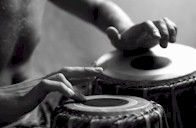
In the late 1960s, the ultimate all-purpose target of popular rage was The Establishment.
While a number of examples of truly irresponsible or unethical behavior on the part of the government, the military, big corporations, and other prominent institutions were brought to light in this era, in the end, virtually any entity could be anathematized as The Establishment simply on the basis of being perceived as large and powerful. Within some circles at the college I attended, this vilification extended even to the student food service.
Was this entirely rational? Well, no--but then, how rational was Hitler’s claim of a global conspiracy by Jewish Communists and bankers? Tribalistic images often need to be read on a more symbolic level.
Another target of great scorn during the late 1960s was anything that could be described as “plastic.” During this era, handcrafted goods of all kinds came to be prized as a kind of small but brave and necessary antidote to “plastic.”
What, exactly, was “plastic?” Ultimately, the definition seems to have boiled down to anything mass-produced with a kind of finish that made it impossible to see the human hand of its maker. “Plastic” goods were ones whose machine-made slickness seemed to implicitly belittle the more honest, if perhaps a bit lumpy, sorts of things that people could imagine themselves making on their own.
Railing against an Establishment that was defined as being essentially anything big enough to make individual people feel small, along with “plastic” products that seemed almost deliberately designed to destroy any evidence of a human hand (or its worth) in their creation, the Counterculture of the late 1960s was an entirely natural symbolic reaction to a world whose relentlessly expanding gigantism of scale was making people feel increasingly irrelevant and inconsequential.



